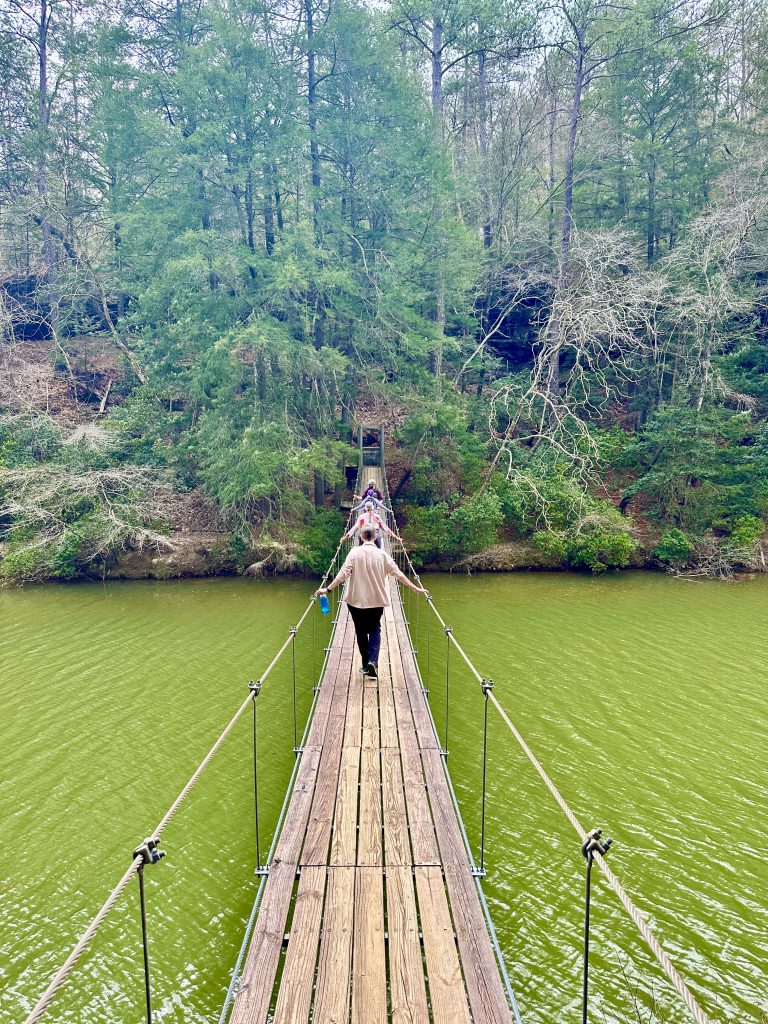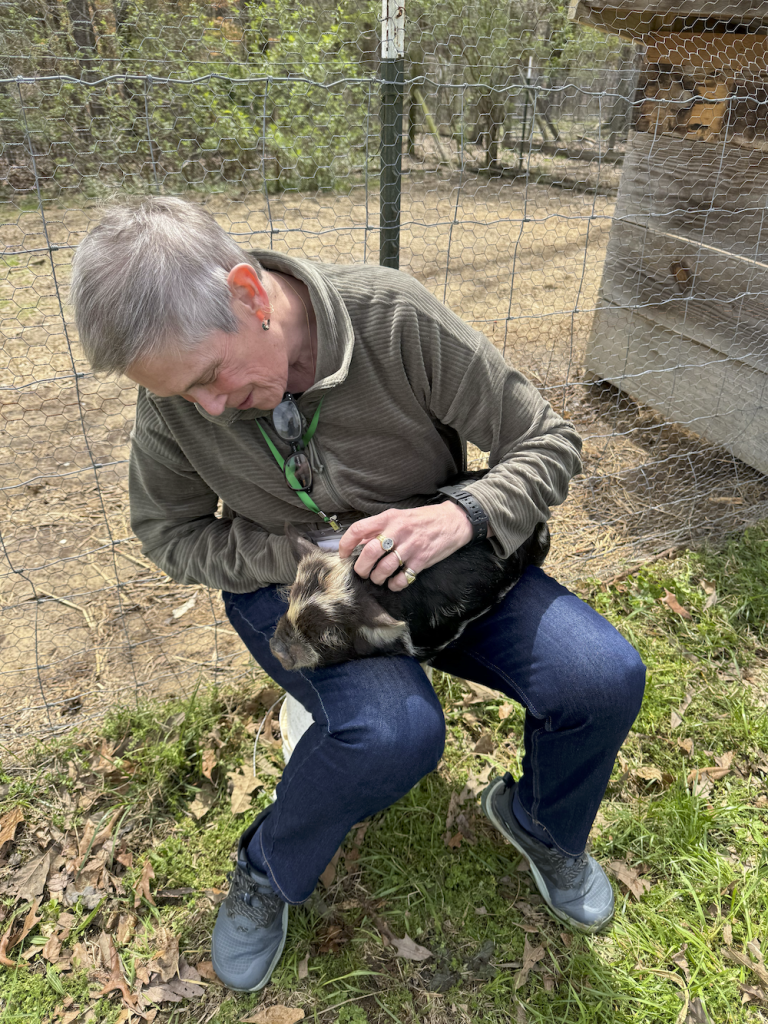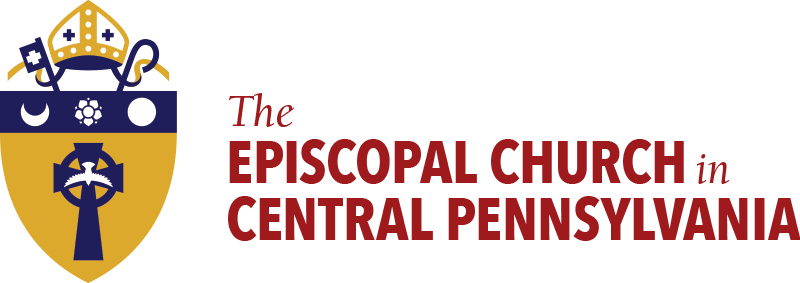Dear Members of the Episcopal Church in Central Pennsylvania,
Greetings from Camp McDowell in the Diocese of Alabama where we are finishing up our spring 2025 House of Bishops meeting. Later today I will fly home, and I am looking forward to being back among you to continue our work in the mission of God. The time here has been informative, restorative, and engaging. I always leave these meetings inspired to be the best bishop that I can be for our diocese.
In this letter I want to offer some thoughts on three questions: 1) What is the purpose of the House of Bishops meeting? 2) What did we actually do for the last 7 days? 3) What Good Word might I offer our diocese as a result of this time away?
The House of Bishops

The House of Bishops is made up of all active and resigned bishops in The Episcopal Church. With 110 dioceses in the Church, that means that there are about 115+ active bishops (some dioceses have a Diocesan Bishop and a Suffragan Bishop) and many resigned bishops are still active in the life of the church as Assistant and Assisting Bishops. Our House of Bishops meetings generally have about 115-120 bishops present. Active bishops are expected to attend; resigned bishops come as they are able and are interested.
The House of Bishops meets twice per year – in March and September – for a week at a time. We gather in various diocesan camps and conference centers alternating locations because of the geographical expanse of our church (The Episcopal Church is across the entire U.S. and in 16 different countries).
The purpose of the meeting is multivalent: We gather as a community to learn – we study topical issues and receive training in salient subject areas; we gather as faith leaders to discuss how we are being faithful to the teachings of Jesus and serving the world in our various contexts; we serve as a collegial body to network, support and hold each other accountable; and we gather to benefit from being together as the judicatory heads of dioceses who often work in isolation. We are also, perhaps first and foremost, grounded in prayer – joining for Centering Prayer sessions, praying the Daily Office and nurtured by the Holy Eucharist.
The Work
The overall tenor of our meeting this time was to establish ourselves as a Body with the leadership of a new Presiding Bishop, the Most Reverend Sean Rowe, and to study, reflect, and learn about issues impacting our work today. We had theological reflections on the efficacy of prayer in our work, on Christian Nationalism in our country today, and on the place of Institutions in our culture. These addresses did more than communicate data – they integrated information and scriptural teaching while inviting us to reflect on how, as bishops, we can lead in these times. We learned from data offered to us from church statisticians on the numerical decline of the church and how, across the decades, membership in the Episcopal Church has been largely influenced by the birth rate in the U.S. This presentation also tracked the financial resources and wealth of the church which, despite decreasing membership, has remained steady and/or showing growth. This offered a positive marker signaling increased personal investment and stewardship in the work of the church.
The consulting group, Compass, talked with us about the realignment underway in the church for staffing and designing a church-wide administrative structure that will best support our mission. So far, this appears to be a reduction of staff at the churchwide level and the design of some new systems to support bishops and dioceses in areas where they most need assistance – namely, Title IV processes and training for leadership in all areas of church planting, spiritual growth, and the merging and reunification of dioceses.
A consultant for property development presented five different “success stories” across the church where parishes and diocesan owned properties have been transformed into centers of mission and income. The College for Bishops (a three-year orientation program for all new bishops) shared its work as they look for its next Executive Director, we received continued training in Title IV (disciplinary canons for clergy) and heard about hopeful developments to offer new pathways for reconciliation. We had a stunning presentation from the Office of Government Relations (OGR) related to immigration. The OGR has substantial resources for us, some of which we used in our diocesan zoom meeting two weeks ago as we shared our own efforts at assisting refugees. Each day was filled with information and material to support us in our work.
In the “interstitial moments” there were gatherings of the Bishops United Against Gun Violence, the “Green Bishops” (Creation Care), those interested in learning more about the Holy Land, Church Planting, Theological Education, and other topics of interest. Bishop Nichols and I spent several successive lunch breaks working on our design for the Diocese of the Susquehanna.
And, we had a sabbath day (Sunday). On that day I joined a small group for a guided hike to a place called “St. Christopher’s Canyon” which was a winding path through some old growth forest down into a damp basin edged in iron rich rock covered in moss. Getting there included a walk across a swinging bridge which took some real faith and trust. The metaphor was not lost on me. Each morning before dawn I also took a walk and listened to the birds as they woke up to the new day. Deer with their fawns walked alongside the path – it was a lovely way to start the day.
A Good Word

Coming from this meeting I feel as though I spent the week steeped in the challenges that we face today as followers of Jesus while reminded daily of our vows to “respect the dignity of every human being,” to “work for justice and peace on the earth, and to “seek and serve Christ in all persons…” (Baptismal Covenant, BCP pg. 304-305). The material that we covered in our meeting allowed us to look at our problems – problems in the church and in the world – and encouraged us to meet them with pragmatism and faith. One of our speakers, the Rt. Rev. Robert Wright, Bishop of Atlanta, spoke to us about “five smooth stones” (1 Samuel 17) that we can use to be effective in working for God’s peace: Clarity of Communication, an Audacious Faith, Good Leadership, Acting with Bravery, and Gentle Boldness.
Each night as I climbed into bed, I prayed one of my favorite collects: “Be present, O merciful God, and protect us through the hours of this night, that we who are wearied by the changes and chances of this life may rest in your eternal changelessness; through Jesus Christ our Lord. Amen.” (BCP pg. 133)
Friends, I have hope. Firm in my faith, energized by you, buoyed by my colleagues, and confident in a God whose love knows no end and whose power cannot be vanquished – I am hopeful for our work together, grateful for the faithful way in which we address our challenges, and eager to keep at it, growing every day, together, closer to the full stature of Christ (Ephesians 4).
See you soon!
In the Way of Love,
+Audrey
The Rt. Rev. Audrey Scanlan
Bishop of the Diocese of Central Pennsylvania
